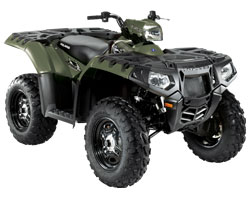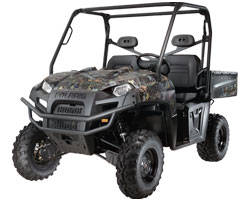The Big Step
You've made the commitment: You're no longer just a deer hunter, you're a manager. And with that role change comes a realization that you're not only part of something larger than yourself, but you're in it for the long haul. The land you manage has become a place where you take deer, but also where you give back. Part of that giving involves making sure your deer—indeed, all wildlife—get the proper nutrition that they need, and that means planting food plots.

Food plotting is popular right now, but it's not as simple as tossing some seed on the ground and watching it grow. For food plots to be effective, they need to be planned well, prepared properly, and maintained. Let's look at the first step—deciding where and how to install food plots.
Serious deer managers will tell you that food plots need to be mission-specific, and most fall into one of two categories. Larger plots are there to provide lots of deer with lots of feed for a long time. We'll call these "destination" food plots. The second type are smaller, specifically shaped, and well-hidden plots that are designed to offer a deer or two a snack on their way to the larger food sources on your property…and to offer you a chance to harvest the specific deer your management plan calls for. For this reason these "harvest" plots are every bit as important to your management plans as the bigger feeding areas. They'll also provide you with the reward of watching deer and other wildlife using your plots!
Your property should be divided between destination plots and harvest plots. Study an aerial photo or topo map to choose potential sites for each plot type, letting such factors as soil moisture, exposure to sun, natural openings, and proximity to bedding areas dictate which plot type goes where. Obviously, destination food plots should be located in areas where large natural openings already occur, such as existing farm fields or meadows. If you don't own a tractor or other large equipment, it's usually possible to hire a local farmer to help establish and maintain these plots.
The good news, of course, is that most of the smaller harvest plots can be created and maintained with a Polaris RANGER—and tools you already own. With a 1-ton towing capacity, the RANGER will have no problem handling pull-behind sprayers, which are ideal for applying the herbicides that kill grass and weeds to prepare a small area for planting. And the Lock & Ride ™ Chainsaw Mount is the perfect place to store a chain saw for clearing brush and small trees. Once you have cleared a section of land, the RANGER, with a bed capacity of 1,000 pounds, will allow you to transport seed and dirt with ease. And there are a growing number of manufacturers making quality implements compatible with the Polaris RANGER—discs, drags, planters—that are perfect for working on food plots. As your commitment to food plotting grows, you'll find even more uses for your Polaris RANGER.
ADVERTISEMENT
Related Vehicles
The Polaris Sportsman® 850 XP
Sportsman XP Facts:
- 850 SOHC Twin EFI Engine
- Available Electronic Power Steering
- Legendary Smooth Rolled Independent Rear Suspension (IRS)
- Superior Ergonomics
Learn More about the Sportsman XP >>
The Polaris RANGER 800 XP®
Ranger 800 XP Facts:
- New! 800 Twin EFI Engine
- Available Electric Power Steering
- Dual A-Arm Front Suspension
- Legendary Smooth Independent Rear Suspension (IRS)
Deer Management Archive
Deer Population by State
Weekly QDM Tips
Take a camera survey of your herd in the pre-season. Mount trail cameras near high-traffic deer areas such as mineral licks, food plots, or fence crossings. Record the number, sex and approximate age of every deer you “shoot”, then compare that data with your field observations come hunting season.







